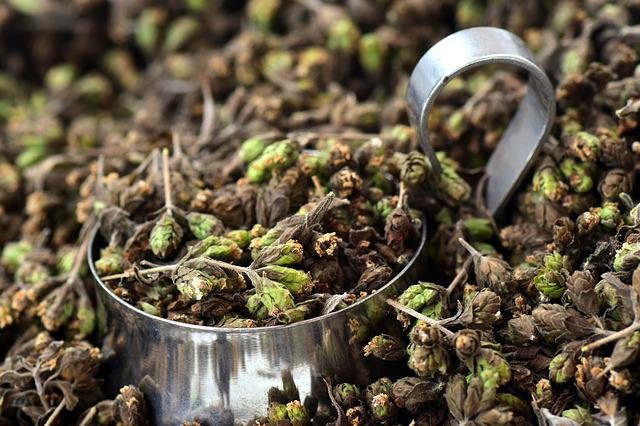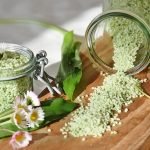
Did you know that there are different plants that can be used as medicinal remedies? Although it is important that we go to the doctor in the event of suffering from any infection or disease, we also have the option of accompanying the treatments that have been prescribed with a natural remedy that has a positive effect on our health, such as wild oregano or cultivated in House.
The oregano plant, also known scientifically as Origanum vulgare L., is a perennial shrub of the labiatae family that is mainly used as a condiment for many dishes due to its characteristic aroma. However, in addition to this use, this plant has medicinal properties that can relieve the symptoms of some diseases, including digestive and respiratory conditions.
Nutritional composition of the oregano plant
Oregano (scientifically called Origanum vulgare L.) is a perennial herbaceous plant that belongs to the Labiatae family and is grown mainly in Europe and Asia, being widely used in Mediterranean cuisine for its excellent aroma. In addition to its culinary use, the benefits of oregano for health in general have caused this plant to also be used as a medicinal remedy to alleviate different ailments. However, before explaining what oregano cures, it is important that we also know the nutrients with which this aromatic plant is composed, that is, the active principles or components of oregano:
- Essential oils: it is especially rich in phenolic substances such as carvacrol and thymol. It also has a good contribution of cineol, limonene, alpha-pinene, caryophyllene and borneol, among others.
- Acids: it has chlorogenic, ferulic, rosmarinic, caffeic, oleanolic, ursolic, vanillinic and palmitic acid.
- Minerals: it has a high potassium content. It also contains other minerals such as manganese, zinc, iron, copper and magnesium.
- Vitamins: contains beta carotene (precursors of vitamin A) and niacin (vitamin B3).
- Other nutrients: it has flavonoids (apigenin, quercetin and luteolin) and tannins.
What is oregano for as a medicinal plant – healing properties
As we have already indicated, oregano is considered a medicinal plant due to its different health properties. But what exactly does oregano cure? To answer this, we must first clarify the main properties of oregano, given by its active ingredients mentioned above.
- Digestive
- Appetizer
- choleretic
- Antispasmodic
- anti-inflammatory
- analgesic
- Diuretic
- diaphoretic
- emmenagogue
- carminative
- Antiseptic
- antibacterial
- antifungal
- Expectorant
Next, we will explain what oregano is used for as a medicinal plant, thanks to these mentioned properties.
Improves digestive problems
One of the most remarkable healing properties of oregano is its digestive effect, which is especially useful in the case of suffering from some conditions such as intestinal spasms. In addition, thanks to its content of thymol, carvacrol and caffeic acid, oregano also has excellent carminative properties that favor the expulsion of intestinal gas and therefore reduces ailments caused by flatulence. For these cases, it is important to prepare this plant in the form of tea or infusion of oregano that we will explain in the next section.
Natural treatment for respiratory diseases
Other benefits of oregano as a medicinal plant are its powerful anti-inflammatory, expectorant and antiseptic properties due to its content of essential acids and oils. Thanks to these properties, this medicinal plant is an excellent natural remedy for respiratory ailments caused by infections such as flu, colds and bronchitis, as it manages to reduce some symptoms of these conditions such as cough, inflammation and the germs that cause infection. As in the previous case, oregano tea will be the most suitable form for this type of case.
Oregano is a natural antiseptic and antibiotic
Thanks to its polyphenol content such as carvacrol and thymol, oregano is considered a natural antibiotic that helps eliminate different infectious conditions caused by bacteria such as Salmonella typhimurium, Staphylococcus epidermidis or Escherichia coli, among others. In addition, thanks to these essential oils, this plant has antifungal properties that reduce fungi that cause infections such as candidiasis.
Properties of oregano to lose weight
Oregano can also be a good supplement for weight loss. On the one hand, we have already said that it has digestive and carminative properties that reduce flatulence and, on the other hand, it has antioxidant and diuretic properties that accelerate the burning of fat and the elimination of retained liquids. In any case, we emphasize that it is a supplement to lose weight and that its greatest effectiveness for this is in tea or infusion, by including water. Thus, to lose weight, it will be vital to follow a balanced diet and exercise, following a healthy lifestyle.
Other medicinal uses of oregano and its benefits
In addition to the above properties, oregano also has the following medicinal uses:
- Improves circulation: thanks to its flavonoid content (especially naringenin), this plant has antiaggregant properties that activate the blood flow in our body.
- Cleanses the liver: its contribution in acids (especially ursolic and rosmarinic) helps eliminate toxins and liquids accumulated in our body.
- Improves menstrual problems: thanks to its emmenagogue properties, oregano is also a good remedy for irregular and painful menstruation, as it relieves pain in the lower abdomen and facilitates the emptying of blood.
- It works as a disinfectant: thanks to its vulnerary, analgesic and healing properties, oregano is a good natural remedy for disinfecting cuts and other external wounds.
How to take oregano as a medicinal plant
As we have already seen in the previous sections, one of the forms most used for medicinal purposes is oregano tea. Therefore, below we show you how to prepare oregano as a medicinal plant in the form of an infusion or tea with a simple step by step:
Ingredients
- 300 ml of water
- 1 tablespoon of oregano
- Honey, sugar, stevia or lemon to taste (optional)
Preparation
- Add the mineral water in a saucepan and heat it over medium heat until it starts to boil.
- Once the water reaches its boiling point, add 1 tablespoon of dried oregano to the saucepan and immediately turn off the heat and cover the container.
- Let the oregano sit in the water for 10 minutes so that it infuses well and then strain the content to remove the remains of the plant.
- Sweeten the drink with a little honey or lemon and drink the oregano infusion that you just prepared.
In the event that you use the infusion of oregano for digestive, respiratory conditions or for bacterial processes, you will have to drink 3 cups a day. On the other hand, if you want to use oregano tea to relieve menstrual symptoms or for its circulatory properties, you will have to drink 2 cups a day. However, before taking this natural remedy, you should consult your GP.
Oregano as a medicinal plant: contraindications and side effects
Although oregano as a medicinal plant is very beneficial, it also has aspects that must be taken into account in order to take it correctly.
Contraindications of oregano
- Neither the infusion or tea nor the oil of oregano is recommended for pregnant or lactating women.
- Its consumption in infusion, tea or oil is not recommended in children under 6 years of age.
- If you are allergic to any of its components.
side effects of oregano
Side effects are only present in normal consumption in people allergic to any of the components of this plant. The rest of the possible side effects only occur when taking it in excess or, for example, by taking pure oregano essential oil directly or in quantity. Some adverse effects in such cases are:
- Allergy.
- Plentiful rules.
- Stomachache.






